Home>Home Maintenance>What To Expect At A Home Inspection As A Buyer
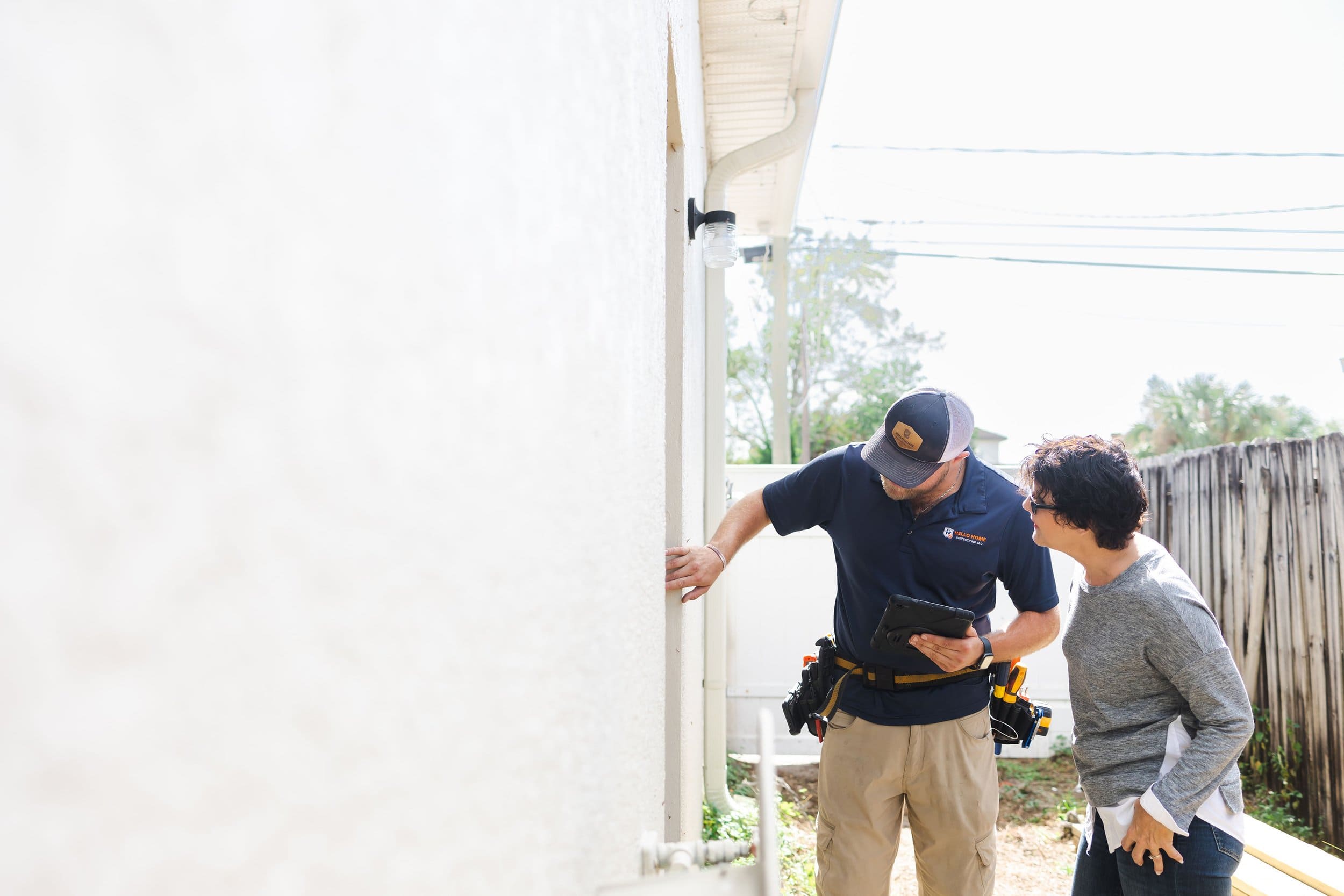

Home Maintenance
What To Expect At A Home Inspection As A Buyer
Modified: March 6, 2024
Get the ultimate guide on what to expect as a buyer during a home inspection. Learn about essential home maintenance tips and ensure a smooth property inspection process.
(Many of the links in this article redirect to a specific reviewed product. Your purchase of these products through affiliate links helps to generate commission for Storables.com, at no extra cost. Learn more)
Introduction
Buying a home is an exciting milestone in life, but it’s also a significant investment. To protect your investment and ensure you’re making an informed decision, getting a home inspection is crucial. A home inspection is a thorough examination of a property’s condition, designed to identify any underlying issues or potential problems.
During a home inspection, a professional home inspector will assess the various components of the property, including the structure, systems, and overall functionality. The findings of the inspection can provide valuable insights into the current state of the home and help you determine whether it is a suitable purchase.
It’s important to have realistic expectations about what a home inspection entails and what you can expect to learn from it. This article will guide you through the process, from preparing for the inspection to addressing any issues that may arise. By understanding what to expect, you can approach the home inspection with confidence and make an informed decision about your potential home.
Key Takeaways:
- Be prepared for a home inspection by choosing a qualified inspector, attending the inspection, and making sure the property is easily accessible. This will help you understand the condition of the home and make informed decisions.
- After the inspection, prioritize issues, consult professionals, negotiate repairs, and keep records. The final walk-through is crucial to ensure that any agreed-upon repairs have been completed.
Read more: What Is A Buyer’s Inspection Advisory?
Preparing for the Home Inspection
Before the home inspection takes place, there are several steps you can take to ensure a smooth and productive process. Here are some tips to help you prepare:
- Research and choose a reputable home inspector: Take the time to research and select a qualified and experienced home inspector. Ask for recommendations from friends, family, or your real estate agent. Look for inspectors who are licensed and certified by recognized professional organizations.
- Coordinate with the seller’s agent: Work with the seller’s agent to schedule the home inspection at a time that is convenient for both parties. Make sure the seller is aware of the inspection and has any necessary access codes or keys available.
- Plan to attend the inspection: It’s highly recommended that you be present during the home inspection. This will give you the opportunity to ask questions, gain a better understanding of the inspector’s findings, and address any concerns directly.
- Prepare a list of questions and concerns: Before the inspection, make a list of specific areas or issues you want the inspector to focus on. This may include concerns about the foundation, roof, electrical system, or any other aspect of the property that you deem important. Sharing this list with the inspector can ensure that your concerns are addressed during the inspection.
- Make necessary arrangements for access: Ensure that the inspector has easy access to all areas of the property, including the attic, crawlspaces, and garage. Remove any obstacles or personal belongings that may prevent the inspector from thoroughly examining these areas.
- Dress appropriately: The home inspection may involve climbing ladders, navigating tight spaces, and getting dirty, so it’s important to dress in comfortable clothing and closed-toe shoes.
By following these preparation tips, you can set the stage for a successful home inspection and maximize the value you gain from the process.
The Role of the Home Inspector
A home inspector plays a vital role in the home buying process by evaluating the condition of the property and providing an unbiased assessment. Their primary responsibility is to conduct a comprehensive examination of the home and identify potential issues that may affect its safety, functionality, or value.
During the inspection, the home inspector will assess various components of the property, including:
- Structure: The inspector will examine the foundation, walls, roof, and overall structural integrity of the home. They will look for signs of cracks, water damage, or any other potential structural issues.
- Exterior: The inspector will evaluate the exterior elements of the home, such as the siding, windows, doors, and landscaping. They will check for proper drainage, signs of moisture intrusion, and any potential hazards.
- Interior: The interior inspection focuses on the walls, ceilings, floors, doors, and windows. The inspector will look for signs of water damage, mold, pests, and other potential issues that may affect the livability of the home.
- Systems: The inspector will assess the various systems of the home, including the electrical, plumbing, and HVAC systems. They will check for proper functionality, potential safety hazards, and the overall condition of these systems.
It is important to note that a home inspection is a visual assessment and does not involve invasive or destructive testing. The inspector will not perform any repairs or modifications to the property during the inspection.
After the inspection is complete, the home inspector will provide you with a detailed report of their findings. This report may include photographs, diagrams, and descriptions of any issues identified during the inspection. It is important to review the report carefully and discuss any concerns or questions you may have with the inspector.
Remember, the role of the home inspector is to provide you with an objective evaluation of the property. Their expertise and professional judgment can help you make a well-informed decision about the home and potentially negotiate repairs or adjustments based on their findings.
Exterior Inspection
During a home inspection, the exterior of the property is thoroughly examined to assess its condition and identify any potential issues. The exterior inspection plays a crucial role in evaluating the overall integrity and maintenance of the home. Here are some key areas that a home inspector will focus on during the exterior inspection:
- Roof: The inspector will inspect the roof for any signs of damage, such as missing or damaged shingles, leaks, or sagging. They will also check the condition of the gutters, downspouts, and chimney.
- Siding: The inspector will assess the siding material for any signs of wear, rot, or damage. They may look for cracks, fading, or areas that need repainting.
- Foundation: The inspector will examine the foundation for any cracks, bulges, or other signs of damage. They will also check for proper drainage around the foundation.
- Windows and doors: The inspector will inspect the windows and exterior doors for proper operation, signs of air leakage, and any damage or decay.
- Driveways and walkways: The inspector will assess the condition of the driveways and walkways, looking for cracks, uneven surfaces, or any trip hazards.
- Landscaping: The inspector will evaluate the landscaping, including trees, shrubs, and any other vegetation that may pose a risk to the property. They will also check for proper grading and drainage.
- Deck and patio: If the property has a deck or patio, the inspector will inspect for any signs of damage, rot, or instability. They may also check the railings and stairs for safety.
During the exterior inspection, the inspector will pay attention to signs of water intrusion, inadequate maintenance, and potential safety hazards. They may use tools such as moisture meters, thermal cameras, or binoculars to aid in their assessment.
It’s important to note that the inspector’s findings during the exterior inspection may influence the overall condition and value of the home. Any issues identified should be thoroughly reviewed and discussed with the inspector, as they can impact the maintenance and future costs associated with the property.
By conducting a thorough exterior inspection, the home inspector provides valuable insights into the condition and potential maintenance requirements of the home’s exterior. This information can help you make an informed decision about the property and ensure its long-term durability.
Interior Inspection
One of the key components of a home inspection is the evaluation of the interior of the property. The interior inspection provides valuable insights into the overall condition and livability of the home. Here are some areas that a home inspector will focus on during the interior inspection:
- Walls, ceilings, and floors: The inspector will carefully examine the walls, ceilings, and floors for any signs of cracks, water stains, or structural issues. They will also look for sagging or uneven surfaces, which may indicate potential problems.
- Windows and doors: The inspector will inspect the windows and doors for proper operation, signs of air leakage, and any damage or decay. They will check if windows and doors are installed securely and functioning as intended.
- Electrical system: The inspector will assess the electrical system, including outlets, switches, and the main electrical panel. They will look for any faulty wiring, inadequate grounding, or safety issues that could pose a risk to the occupants.
- Plumbing system: The plumbing system will be inspected for leaks, water pressure, drainage issues, and the overall functionality of fixtures such as sinks, toilets, and showers. The inspector will also check for signs of water damage or mold.
- Heating, ventilation, and air conditioning (HVAC) system: The HVAC system will be evaluated to ensure proper operation, adequate heat or cooling distribution, and ventilation. The inspector may recommend further inspections or servicing if any issues are identified.
- Insulation and ventilation: The inspector will check the insulation levels in the attic and crawl spaces to determine if they meet the recommended standards. They will also assess the overall ventilation of the property to ensure proper air circulation.
During the interior inspection, the inspector will look for any signs of water damage, mold, pests, or other potential issues that may affect the safety and livability of the home. They may use tools such as moisture meters, infrared cameras, or even smoke detectors to detect hidden problems.
It’s essential to review the inspector’s findings during the interior inspection carefully. Any identified issues should be discussed with the inspector to understand the severity and potential solutions. The interior inspection provides valuable information about the condition of the home’s systems and the necessary maintenance or repairs that may be needed.
By thoroughly assessing the interior of the property, the home inspector helps you gain a better understanding of the home’s overall condition and the potential costs associated with its maintenance. This knowledge empowers you to make an informed decision about the property and negotiate accordingly, and ultimately ensures the safety and comfort of your future home.
Be prepared to ask questions and take notes during the home inspection. This will help you understand any issues that may arise and make informed decisions about the property.
Read more: What To Expect From A Home Inspection
Systems Inspection
As part of a comprehensive home inspection, the inspector will evaluate the various systems within the property. The systems inspection is a crucial aspect of the inspection process as it assesses the functionality, safety, and maintenance requirements of essential systems. Here are the key systems that a home inspector will typically evaluate:
- Electrical System: The electrical system inspection includes checking the electrical panels, wiring, outlets, switches, and grounding. The inspector will look for any outdated or faulty wiring, inadequate circuit breakers, or potential fire hazards. They will also verify if the electrical system meets the current safety standards.
- Plumbing System: The plumbing system examination encompasses checking the water supply lines, drainage system, fixtures, and water heater. The inspector will assess for any leaks, water pressure issues, faulty valves, or signs of corrosion. They may also check the presence of lead pipes or other potential health hazards.
- Heating, Ventilation, and Air Conditioning (HVAC) System: The HVAC system inspection will involve evaluating the heating, cooling, and ventilation systems. The inspector will test the operation, efficiency, and safety of the furnace, air conditioning unit, ductwork, filters, and thermostats. They may recommend further evaluation or servicing if any issues are identified.
- Water Heater: The water heater inspection will verify its condition, age, and safety features. The inspector will check for any signs of leaks, corrosion, or inadequate ventilation. They will also assess the water temperature and potential safety risks such as scalding hazards.
- Insulation and Ventilation: The inspector will examine the insulation levels, particularly in attics and crawl spaces, to ensure proper energy efficiency and temperature regulation. They will also assess the ventilation systems, including fans and vents, to prevent moisture buildup and promote indoor air quality.
- Fire Safety Systems: The inspection may include examining the smoke detectors, carbon monoxide detectors, and fire extinguishers within the property. The inspector will check if these systems are functional, properly located, and comply with local safety regulations.
During the systems inspection, the home inspector will test and observe the operation of each system. They may use specialized tools, such as infrared cameras or moisture meters, to detect issues that are not readily visible. The inspector will document any deficiencies or safety concerns and recommend further actions or repairs as necessary.
Understanding the condition and functionality of the various systems within a property is essential for maintaining a safe and comfortable living environment. The systems inspection provides valuable insights into the state of these systems and informs you of any potential maintenance or repair needs. By addressing these issues, you can ensure the long-term efficiency and safety of your future home.
Common Issues Found During a Home Inspection
A home inspection is designed to identify any existing or potential issues within a property. While every home is unique, there are common problems that can arise during the inspection process. Understanding these common issues can help you better assess the condition of a home and make informed decisions. Here are some of the most common issues found during a home inspection:
- Roofing Problems: Roof issues are frequently encountered during inspections. This can include missing or damaged shingles, leaks, improper flashing, or signs of poor maintenance. Damaged or deteriorating roofs can lead to water infiltration and structural damage if not addressed.
- Mold and Moisture Problems: Inspectors often find signs of water damage, mold growth, or high humidity levels. These issues can result from plumbing leaks, inadequate ventilation, or moisture intrusion. Mold and moisture problems can not only affect the structural integrity of a home but also pose health risks to occupants.
- Electrical Wiring Deficiencies: Outdated or faulty electrical wiring can present serious safety hazards. Inspectors may discover improperly installed or overloaded circuits, faulty outlets, or inadequate grounding. Electrical issues should be addressed promptly to prevent the risk of fire or electrical shocks.
- Plumbing Issues: Common plumbing problems include leaks, clogged drains, or improper installation of fixtures. These issues can lead to water damage, mold growth, and costly repairs. It’s important to ensure that the plumbing system is in good working condition to prevent future issues.
- Structural Concerns: Inspectors may identify structural issues, such as cracks in the foundation, sagging floors, or bowing walls. These problems can have various causes, including settling, water damage, or inadequate construction. Structural concerns should be carefully evaluated as they can impact the stability and safety of a home.
- Heating, Ventilation, and Air Conditioning (HVAC) Problems: HVAC systems are often inspected for issues such as malfunctioning units, improper installation, or inadequate maintenance. Inefficient or faulty HVAC systems can result in poor indoor air quality, discomfort, or high energy costs.
- Insufficient Insulation: Inadequate insulation can lead to energy loss, uncomfortable indoor temperatures, and higher utility bills. Inspectors may recommend improving insulation levels in attics, walls, or crawl spaces to enhance energy efficiency and comfort.
- Aging or Defective Appliances: Inspectors may discover aging or malfunctioning appliances such as water heaters, refrigerators, or stoves. These appliances may need repairs or replacement, adding potential costs to homeowners.
It’s important to note that discovering these issues during a home inspection doesn’t necessarily mean you should abandon the purchase. Instead, it provides an opportunity to negotiate repairs, request seller concessions, or re-evaluate the overall value of the property. Working with a knowledgeable real estate agent and experienced professionals can help you navigate these common issues and make informed decisions.
Remember, no home is perfect, and the key is to identify and address any potential issues to ensure the safety, functionality, and long-term enjoyment of your new home.
How to Address Inspection Findings
Once you have received the inspection report and reviewed the findings, it’s essential to determine how to address any issues that were identified. Here are some steps to help you navigate the process:
- Prioritize the Issues: Start by identifying which items are the most critical or require immediate attention. Focus on safety concerns, structural issues, or major systems that are not functioning properly. These should be your top priority for resolution.
- Consult with Professionals: If the inspection report reveals significant issues, it’s advisable to consult with qualified professionals for further evaluation. For example, if there are electrical or plumbing concerns, you may want to hire a licensed electrician or plumber to assess and provide recommendations.
- Negotiate Repairs or Request Concessions: Depending on the severity of the issues found, you can negotiate with the seller to address the necessary repairs. This can involve requesting that the seller complete repairs before closing or providing concessions towards the cost of the repairs. Your real estate agent can guide you through this negotiation process.
- Obtain Multiple Quotes: If you decide to take on the repairs yourself, it’s wise to obtain multiple quotes from qualified contractors or specialists. This allows you to compare prices, review the scope of work, and select the most suitable option for your needs.
- Consider Factors for Decision-Making: When deciding how to address inspection findings, consider factors such as the cost of repairs, the potential impact on the property value, your budget, and your long-term plans for the home. Sometimes it may be more feasible to request a reduction in the purchase price or receive credit towards future repairs instead of having the seller complete the repairs.
- Keep a Record: It’s crucial to document any agreements or contracts related to the repairs or concessions. Maintain a record of receipts, invoices, and communication regarding the resolution of the inspection findings.
- Reinspection: If significant repairs were negotiated or completed by the seller, consider having a reinspection to ensure that the agreed-upon repairs were carried out satisfactorily. This helps provide peace of mind that the issues have been resolved as agreed.
Remember, addressing inspection findings is a crucial part of the home buying process. By carefully considering the issues, consulting with professionals, and negotiating with the seller, you can achieve a resolution that aligns with your expectations and protects your investment in the property.
Always consult with your real estate agent and any necessary professionals to guide you through this process, as they can provide valuable insights and expertise to help you make well-informed decisions.
The Final Walk-Through
The final walk-through is an important step in the home buying process that typically occurs shortly before closing. It allows you to ensure that the property is in the agreed-upon condition and that any repairs or modifications requested after the home inspection have been completed. Here’s what you should consider during the final walk-through:
- Verify Repairs: Carefully inspect the property to ensure that any repairs or requested modifications have been completed to your satisfaction. Bring a copy of the inspection report and any agreements made with the seller regarding repairs or concessions.
- Check Systems and Appliances: Test the functionality of major systems, such as the electrical, plumbing, and HVAC systems. Turn on faucets, flush toilets, check light switches, and test appliances to ensure they are in working order.
- Inspect the Property: Walk through the entire property, including the interior and exterior, to check for any visible issues or damage that may have occurred since the last visit. Look for any signs of new leaks, damage to walls or floors, or issues with windows and doors.
- Check for Personal Belongings: Ensure that the property is empty of any personal belongings or debris that were not included in the sale. Confirm that the seller has vacated the property as agreed upon in the contract.
- Utilities and Utilities Transfer: Confirm that all necessary utilities are functioning properly, such as electricity, water, and heating/cooling systems. If utility transfers were part of the negotiation process, ensure that the appropriate accounts have been transferred into your name.
- Review Documentation: Bring relevant documents, including the purchase agreement, inspection reports, and any additional agreements or addendums, to reference during the walk-through. Verify that all agreed-upon terms have been met.
If any issues are discovered during the final walk-through, communicate them immediately with your real estate agent or attorney. Depending on the severity of the issue, adjustments may need to be made to the closing documents or further negotiations may need to take place with the seller.
It’s important to note that the final walk-through is not a substitute for a home inspection. Its primary purpose is to confirm that the property is in the expected condition and that any agreed-upon repairs have been completed.
By conducting a thorough final walk-through, you can ensure that you are getting the property you are expecting and address any last-minute concerns before the closing. This final step provides a sense of reassurance and peace of mind as you prepare to take ownership of your new home.
Conclusion
A home inspection is a critical step in the home buying process, providing valuable insights into the condition and potential issues of a property. By understanding what to expect during a home inspection, preparing adequately, and knowing how to address inspection findings, you can navigate this process with confidence and make informed decisions.
Preparing for the home inspection involves conducting research, choosing a reputable inspector, coordinating with the seller’s agent, and attending the inspection. Being present during the inspection allows you to ask questions, gain a comprehensive understanding of the inspector’s findings, and address any concerns directly.
The role of the home inspector is to provide an objective evaluation of the property’s condition. They assess the structure, exterior, interior, and systems of the home, identifying any potential issues. It’s important to review the inspector’s findings carefully and discuss any concerns or questions you may have to make well-informed decisions about the property.
The exterior inspection focuses on the roof, siding, foundation, windows, doors, and landscaping, while the interior inspection evaluates the walls, ceilings, floors, windows, doors, and various systems such as electrical, plumbing, and HVAC. These inspections offer valuable insights into the overall condition and maintenance requirements of the property.
Common issues found during a home inspection can include roofing problems, mold and moisture issues, electrical wiring deficiencies, plumbing problems, structural concerns, HVAC problems, insulation and ventilation deficiencies, and aging or defective appliances. Identifying these issues allows you to assess their impact and negotiate repairs or concessions with the seller.
Addressing inspection findings involves prioritizing the issues, consulting with professionals, negotiating repairs or concessions, obtaining multiple quotes, considering factors for decision-making, and keeping a record of agreements and communications. By following these steps, you can ensure that necessary repairs or adjustments are made and protect your investment in the property.
The final walk-through is the last opportunity to verify that any repairs or modifications requested after the home inspection have been completed, and the property is in the agreed-upon condition. It’s essential to carefully inspect the property, check systems and appliances, and review all relevant documentation to ensure that everything is in order before closing.
In conclusion, a home inspection provides valuable information about the condition and potential issues of a property, allowing you to make informed decisions. By understanding the process, actively participating in the inspection, and addressing inspection findings effectively, you can confidently move forward in your home buying journey and ensure a safe and comfortable living environment for years to come.
Frequently Asked Questions about What To Expect At A Home Inspection As A Buyer
Was this page helpful?
At Storables.com, we guarantee accurate and reliable information. Our content, validated by Expert Board Contributors, is crafted following stringent Editorial Policies. We're committed to providing you with well-researched, expert-backed insights for all your informational needs.
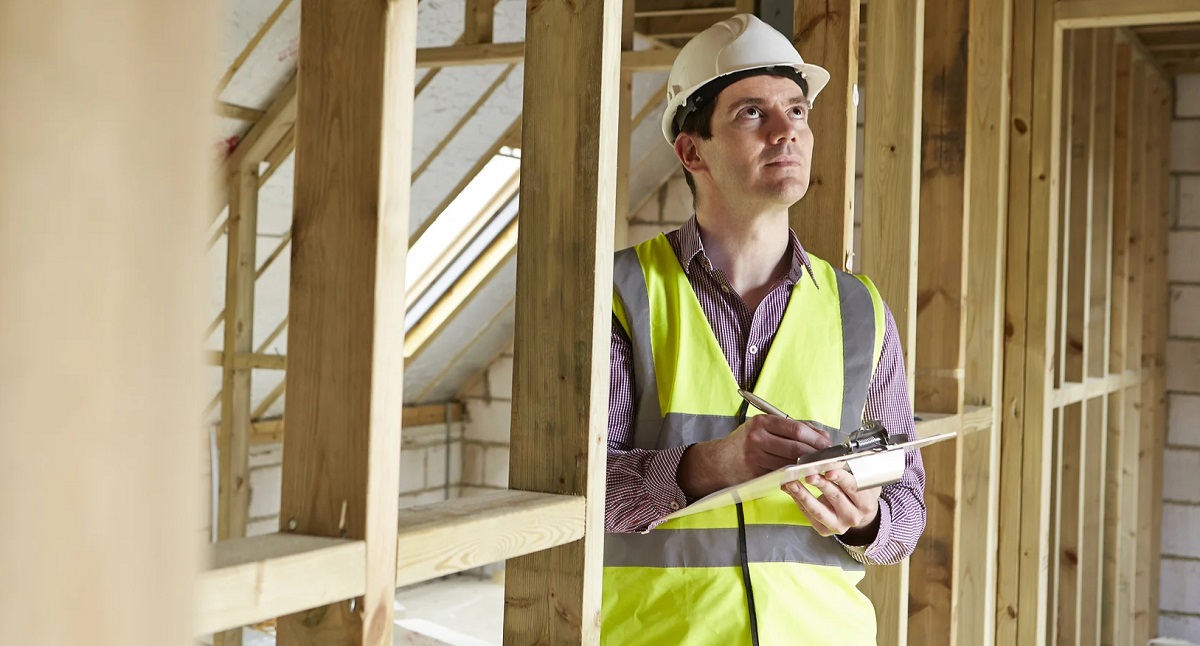

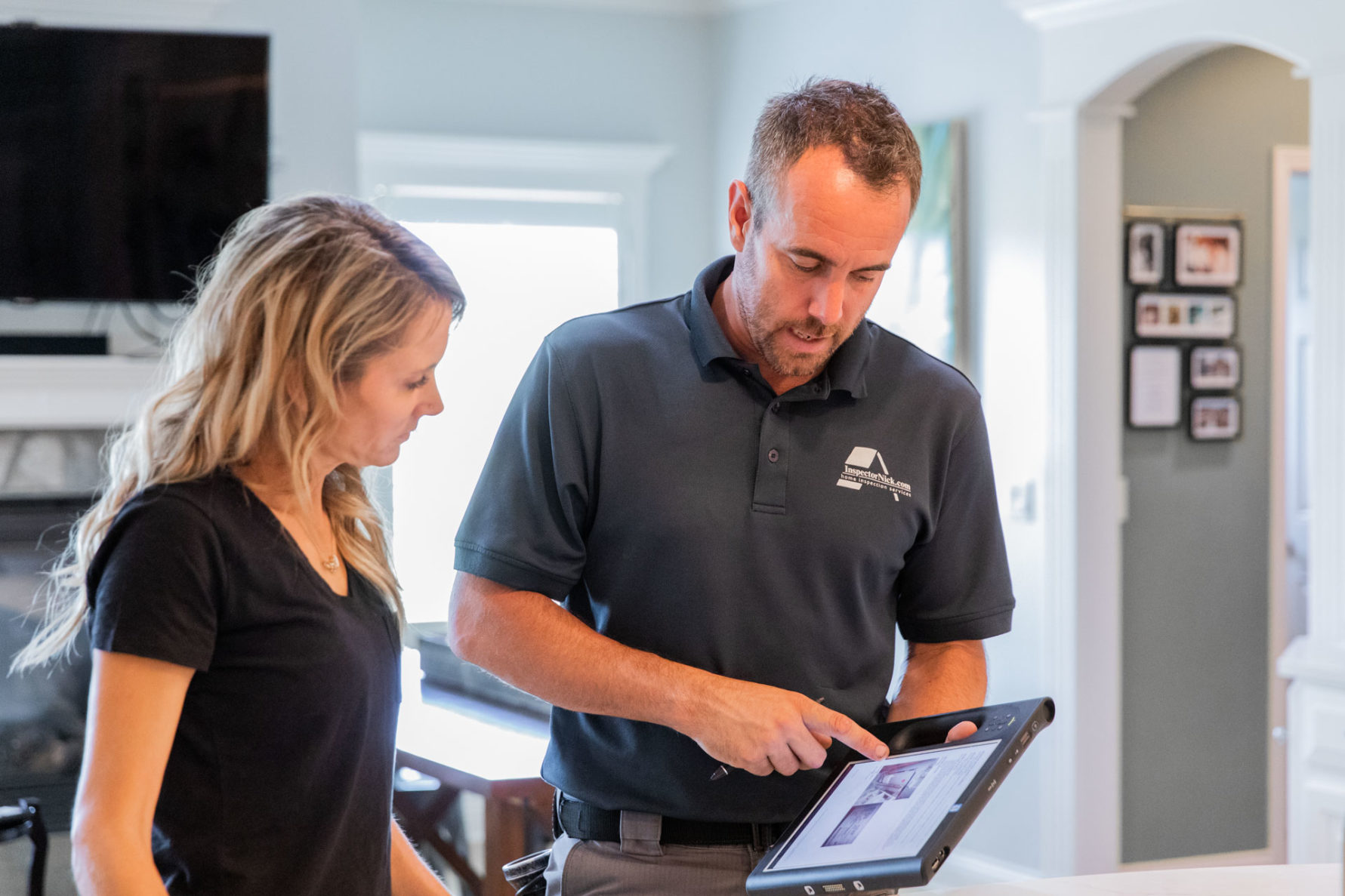

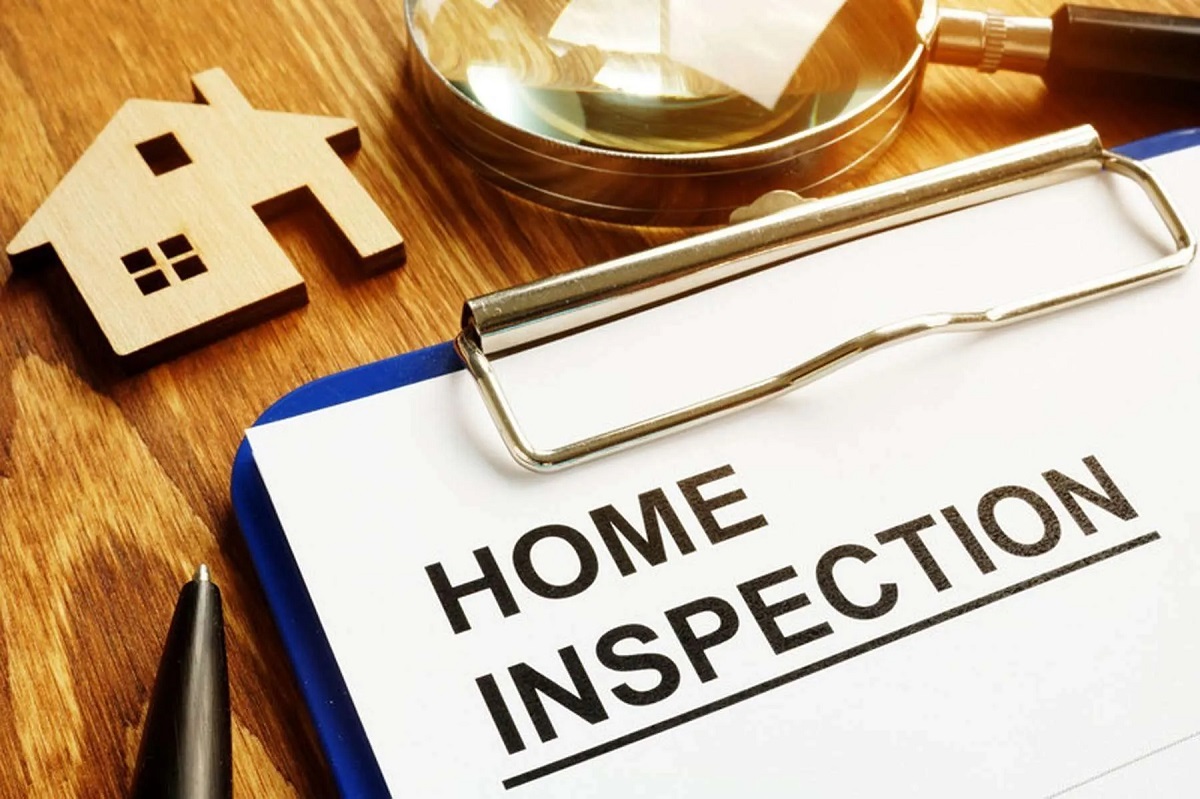
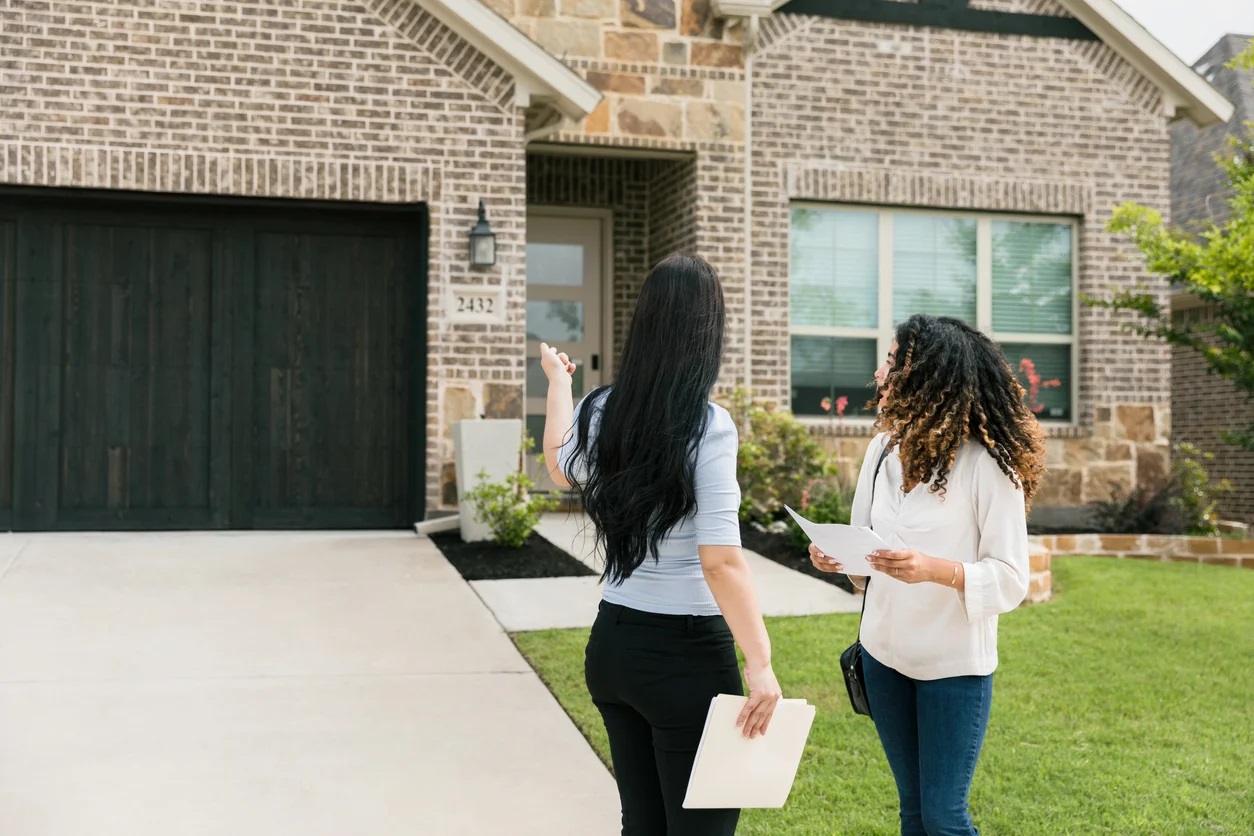
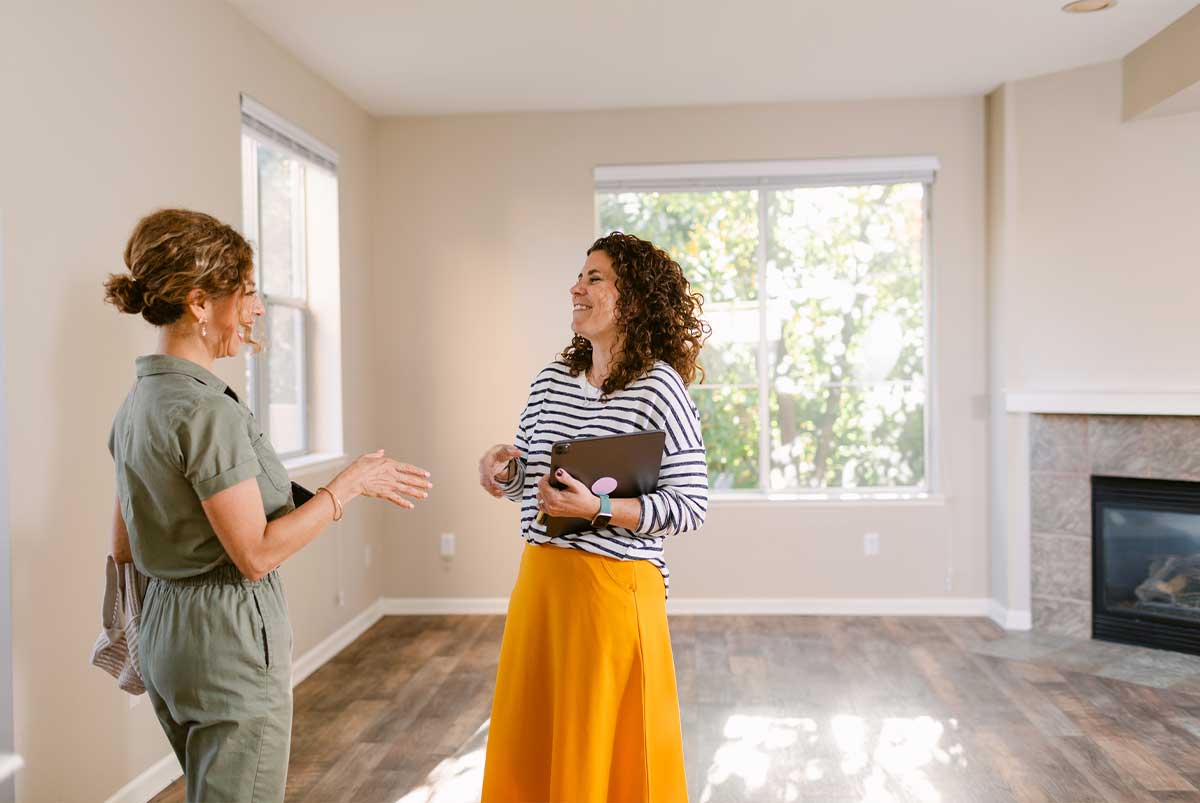

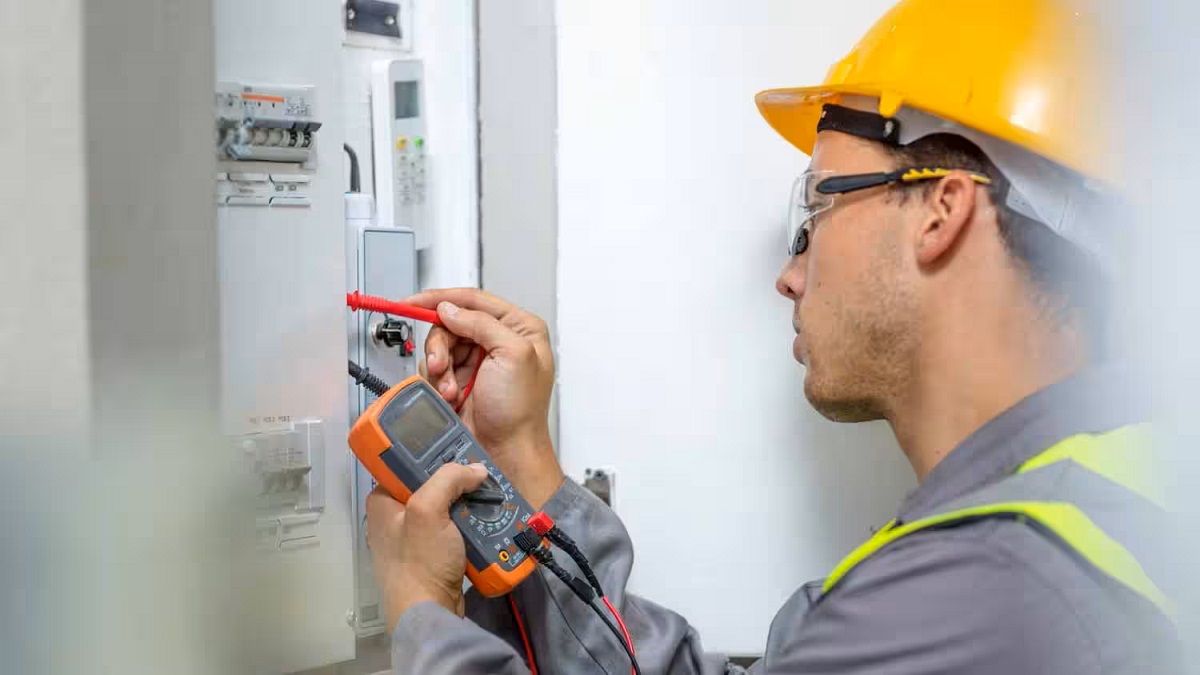





0 thoughts on “What To Expect At A Home Inspection As A Buyer”